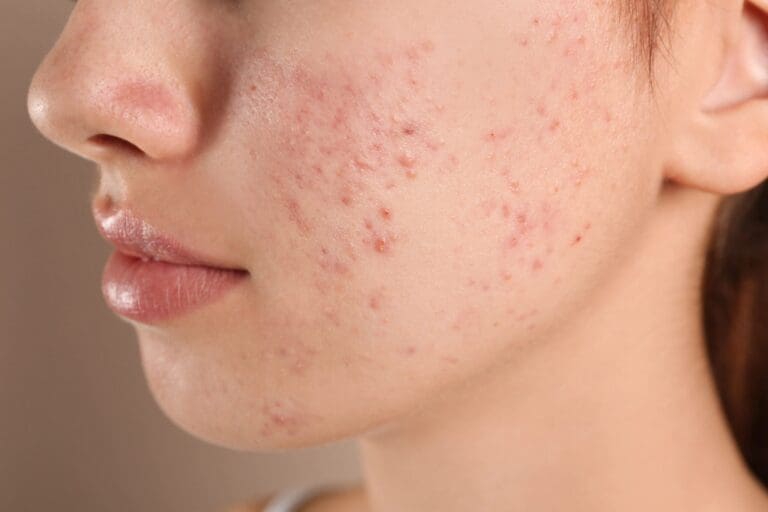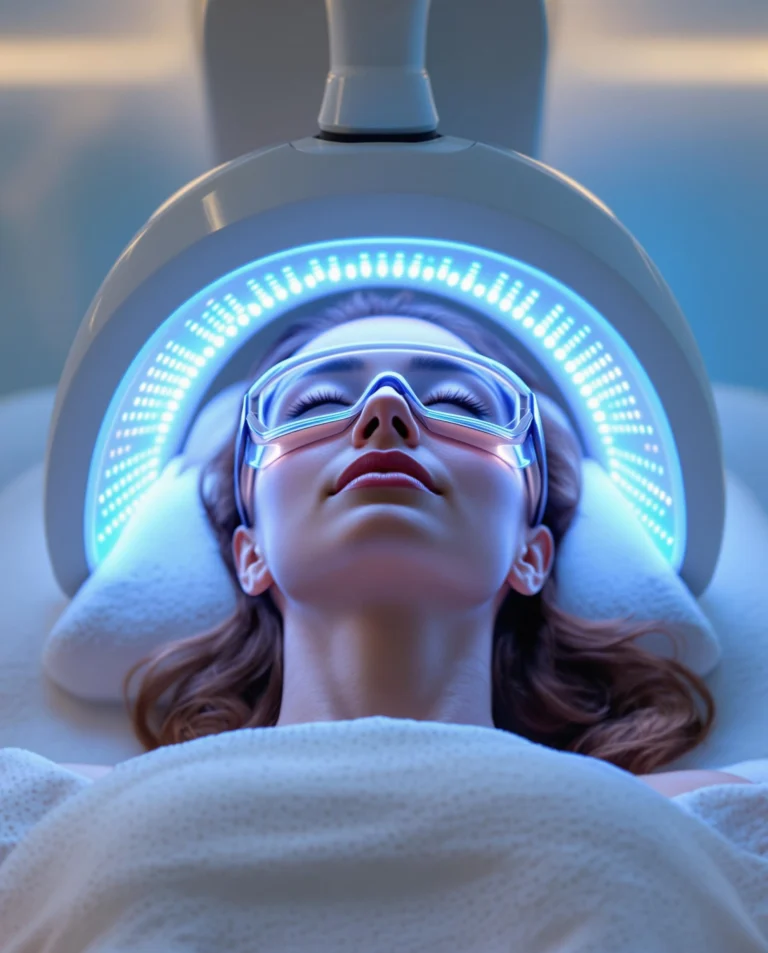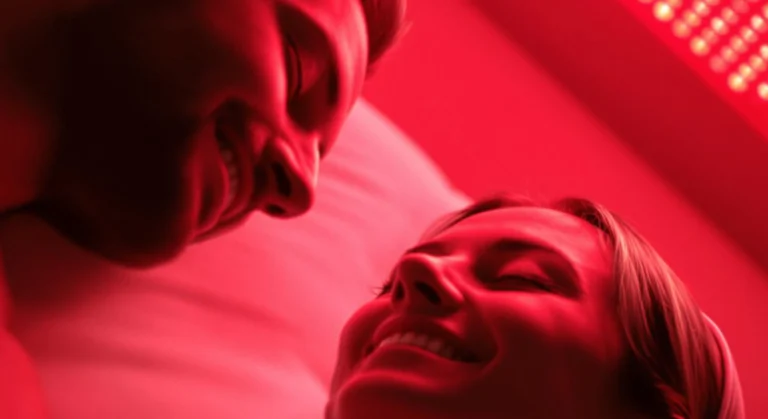Would you rather listen to a podcast than read an article? Click here for a deep dive podcast on this article and the studies linked below.
Does Red Light Therapy really work for hair loss?
Scientific studies suggest that red light therapy may be as effective as drugs like Finasteride and Minoxidil—without the side effects. It won’t magically regrow a full head of hair, but by energizing your mitochondria, it can help thicken thinning patches in the early stages of hair loss and potentially boost the results of other treatments.
- Does Red Light Therapy really work for hair loss?
- Introduction
- How Red Light Therapy Works for Hair Growth
- Scientific Studies Supporting Red Light Therapy for Hair Loss
- How to Use Red Light Therapy for Hair Regrowth
- Potential Side Effects and Considerations
- Red Light Therapy For Hair Loss Before & After Images
- 🌟 What the Research Actually Shows
- 🔁 Combining Therapies = Better Results
- ✅ Summary: How Real Are The Results?
- Frequently Asked Questions About Red Light Therapy for Hair Loss
- Conclusion
- Resource Box (References)
- More About Light Therapy
Introduction
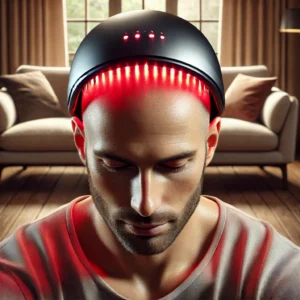
Hair loss is a common concern affecting millions worldwide, leading many to seek effective treatments. Among the various solutions available, red light therapy (RLT) has emerged as a promising, non-invasive method to stimulate hair growth. But does it actually work? This article explores the science behind red light therapy for hair loss, how it works, and what studies say about its effectiveness.
How Red Light Therapy Works for Hair Growth
RLT works by penetrating the scalp and stimulating hair follicles at a cellular level. Here’s how:
- Boosts ATP Production: Red light enhances mitochondrial function in hair follicle cells, leading to increased adenosine triphosphate (ATP) production. ATP is the energy source that drives cellular processes, including hair growth (1).
- Increases Blood Flow: Improved circulation delivers more oxygen and nutrients to hair follicles, promoting a healthier scalp environment (2).
- Reduces Inflammation: Chronic inflammation has been linked to hair loss conditions such as androgenetic alopecia. RLT has anti-inflammatory effects, reducing oxidative stress and promoting follicle survival (3).
- Extends the Growth Phase (Anagen): Hair grows in cycles, with the anagen phase being the active growth stage. Studies suggest that red light therapy helps prolong this phase, reducing hair thinning and shedding (4).
Scientific Studies Supporting Red Light Therapy for Hair Loss
Several clinical studies have explored the efficacy of RLT in treating hair loss. Here are some notable findings:
- Study 1: A 2014 randomized, double-blind, sham-controlled study published in Lasers in Surgery and Medicine found that participants who used a 655 nm red light laser cap experienced a 39% increase in hair density over 16 weeks (5).
- Study 2: A 2017 meta-analysis in Skin Appendage Disorders reviewed multiple trials and concluded that low-level laser therapy significantly increased hair count and thickness in both men and women with androgenetic alopecia (6).
- Study 3: A 2019 study in The Journal of Cosmetic and Laser Therapy compared RLT to finasteride and minoxidil. The results showed that RLT was equally effective but with no significant side effects, making it a safer alternative for many (7).
- Study 4: A 2020 review published in The Journal of Clinical and Aesthetic Dermatology confirmed that red light therapy devices improved hair density and scalp health, particularly in those with genetic hair loss (8).
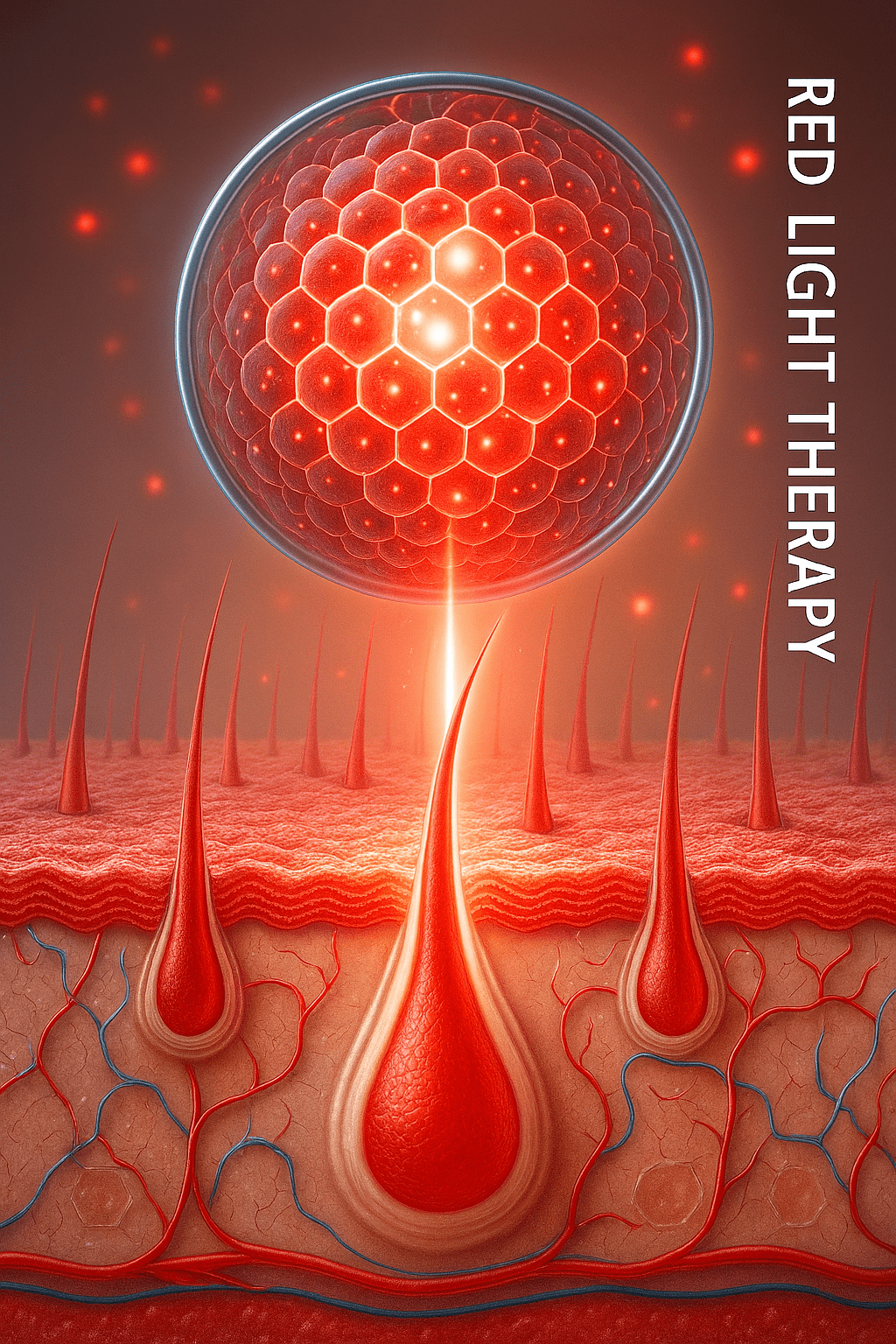
How to Use Red Light Therapy for Hair Regrowth
To achieve optimal results, consistency is key. Here are some practical tips:
- Device Selection: Choose an FDA-cleared red light therapy device, such as a laser cap, LED helmet, or handheld laser comb.
- Wavelength Range: Ensure the device operates between 630-850 nm, as this range is most effective for hair follicle stimulation.
- Duration & Frequency: Most studies recommend 10-20 minutes per session, 3-5 times per week.
- Patience & Commitment: Hair growth takes time. Visible improvements are typically seen after 3-6 months of consistent use.
- Combination Therapy: Some studies suggest that combining RLT with topical minoxidil or microneedling enhances results.

Potential Side Effects and Considerations
Red light therapy is generally safe, non-invasive, and painless, but there are some considerations:
- Mild Scalp Warmth: Some users report a slight warming sensation, but this is not harmful.
- Eye Protection: Avoid looking directly into laser devices to prevent eye strain.
- Not a Cure-All: While effective for many, RLT is less effective for individuals with complete baldness or scarring alopecia.
Red Light Therapy For Hair Loss Before & After Images
When you Google “red light therapy for hair loss,” this is what pops up:
Seeing dozens of “before & after” photos is eye-catching—but do they show real results, or just hype?
🌟 What the Research Actually Shows
Red light therapy (a form of low-level laser therapy, or LLLT) has been studied extensively for androgenetic alopecia (male/female pattern baldness).
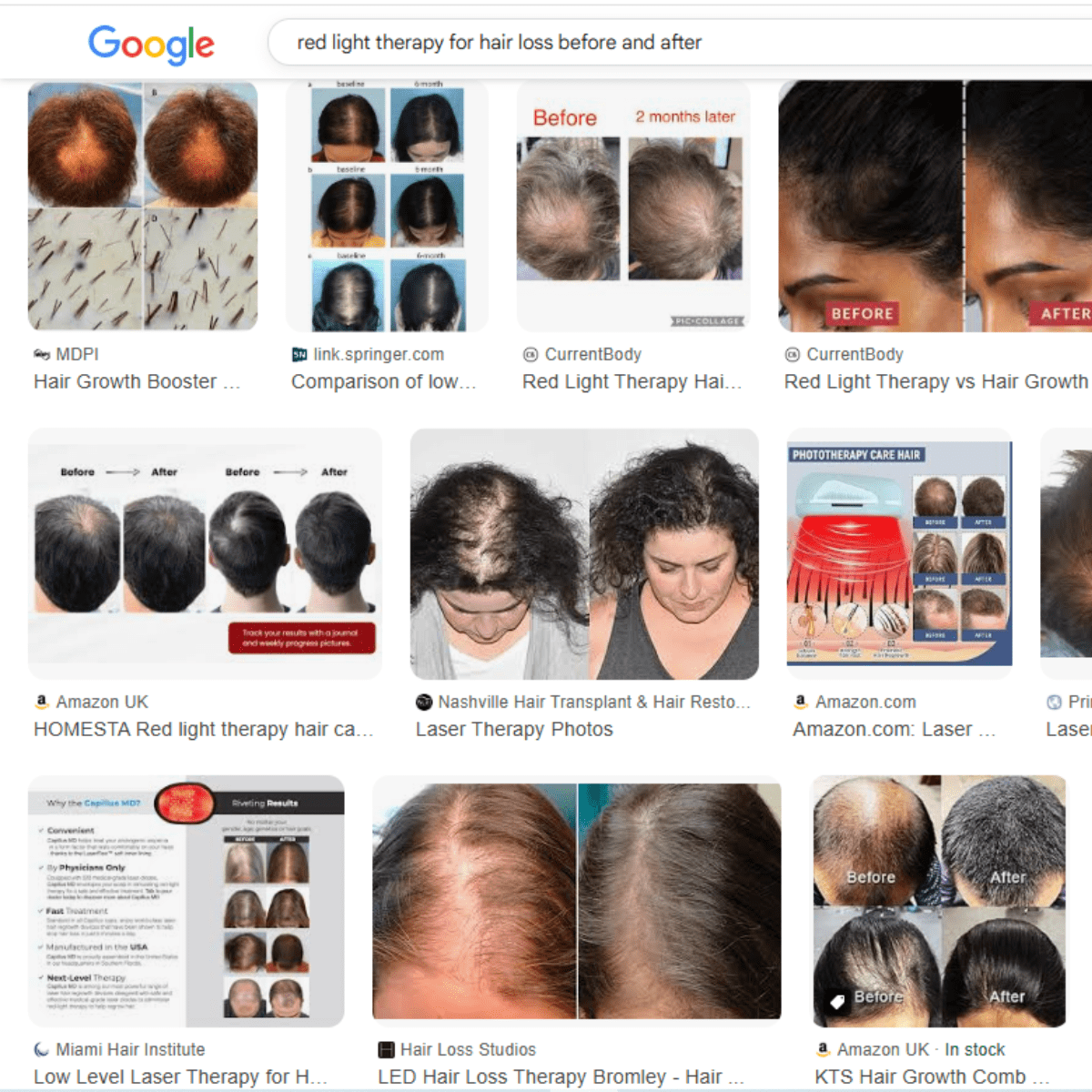
Reviews show:
- Early studies (2012–2015) found “tentative evidence of benefit”
- A 2017 review found 10 out of 11 trials reported significant hair growth compared to controls
- Meta‑analyses confirm increased hair density and growth across helmets, combs, and hats, regardless of device type.
🔁 Combining Therapies = Better Results
LLLT isn’t a magic bullet, but when used alongside minoxidil or finasteride, studies suggest substantially higher hair counts than any single treatment on its own .
✅ Summary: How Real Are The Results?
| Outcome | Evidence Quality | What It Means |
|---|---|---|
| Increased hair density | Moderate → Strong | Yes—visible improvement |
| Works across user types | Proven | Men & women, hats/helmets/combs |
| Best when combined | Strong | Works even better with meds |
Frequently Asked Questions About Red Light Therapy for Hair Loss
Conclusion
Red light therapy has emerged as a scientifically backed, non-invasive treatment for hair loss, showing promising results in clinical trials. By improving cellular energy production, boosting circulation, and reducing inflammation, it helps revitalize hair follicles and promote regrowth. While results take time, consistent use of high-quality devices can make a noticeable difference. For those seeking a drug-free, side-effect-free approach to hair restoration, RLT is a compelling option worth considering.
Resource Box (References)
- Chung, H., et al. (2012). “The Nuts and Bolts of Low-Level Laser (Light) Therapy.” Annals of Biomedical Engineering.
- Hamblin, M. R. (2017). “Mechanisms and applications of the anti-inflammatory effects of photobiomodulation.” AIMS Biophysics.
- Avci, P., et al. (2014). “Low-level laser (light) therapy (LLLT) in skin: stimulating, healing, restoring.” Seminars in Cutaneous Medicine and Surgery.
- Gupta, A. K., et al. (2014). “The Use of Low-Level Light Therapy in the Treatment of Androgenetic Alopecia and Female Pattern Hair Loss.” Lasers in Surgery and Medicine.
- Lanzafame, R. J., et al. (2014). “The growth of human scalp hair mediated by visible red light laser and LED sources in males.” Lasers in Surgery and Medicine.
- Adil, A., & Godwin, M. (2017). “The effectiveness of treatments for androgenetic alopecia: A systematic review and meta-analysis.” Skin Appendage Disorders.
- Zarei, M., et al. (2019). “Comparative evaluation of low-level laser therapy and conventional treatments for hair loss: A systematic review.” The Journal of Cosmetic and Laser Therapy.
- Ablon, G. (2020). “Photobiomodulation for Hair Regrowth: A Review of the Literature.” The Journal of Clinical and Aesthetic Dermatology.

